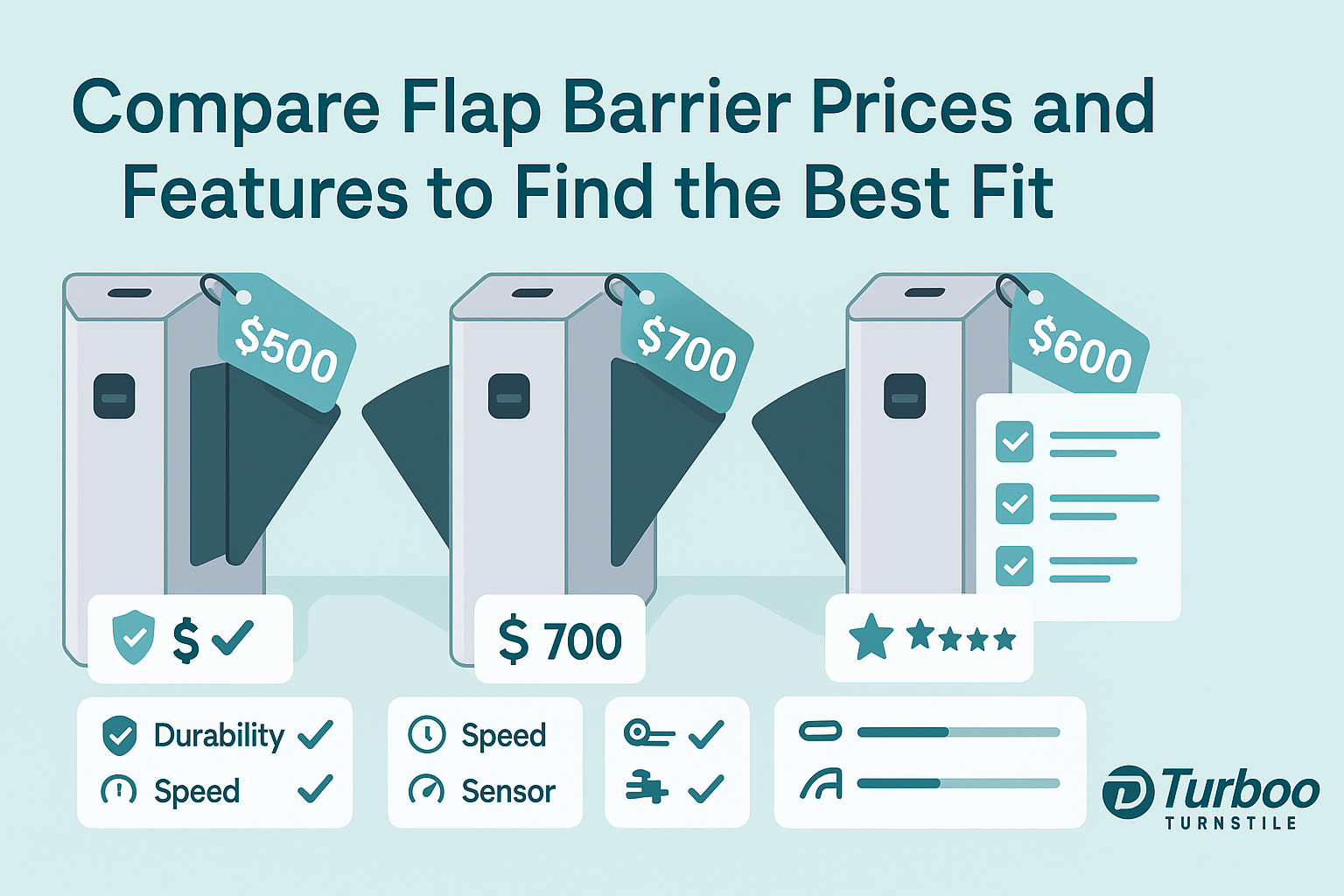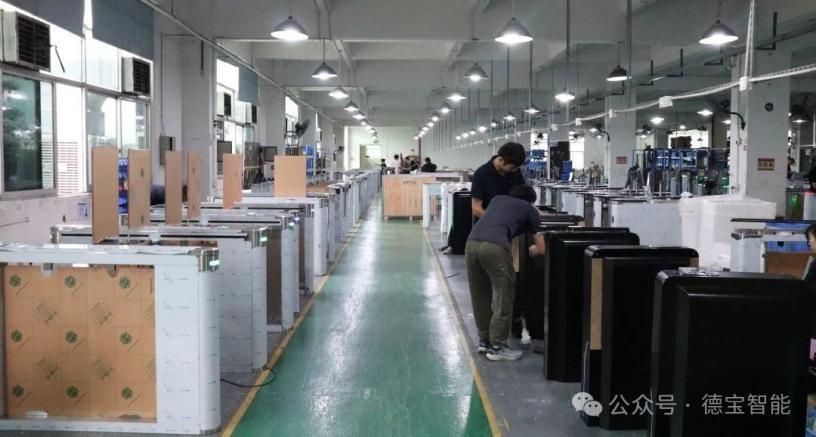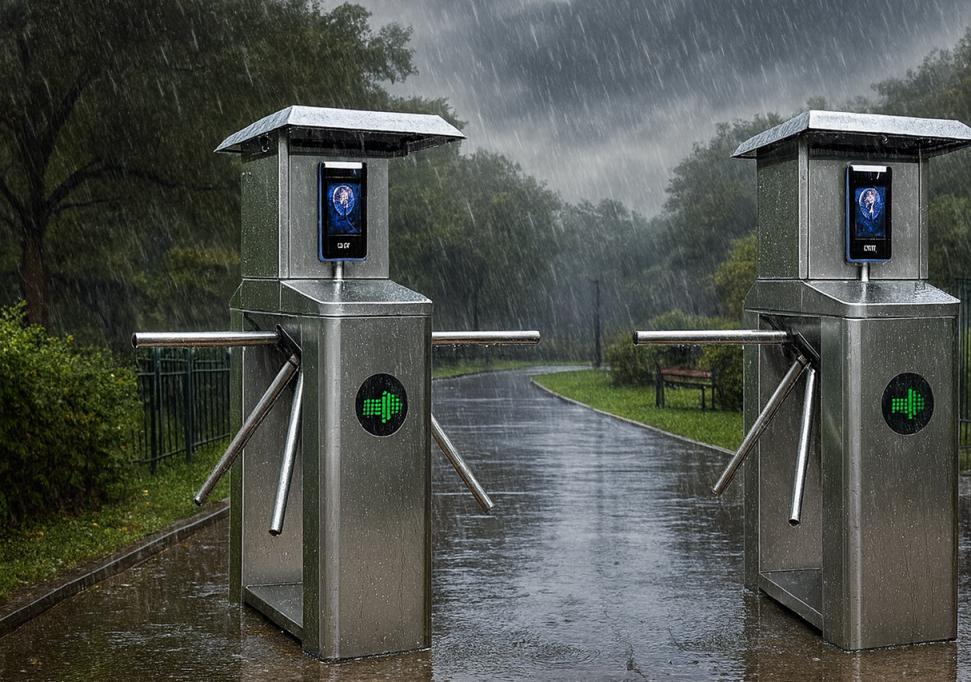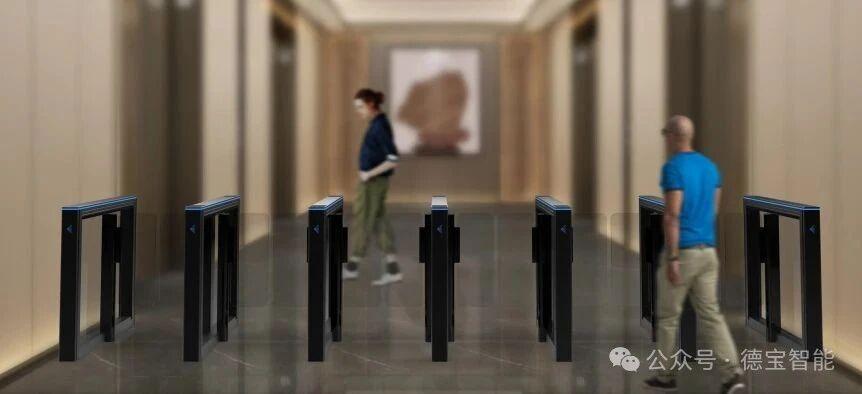Compare Flap Barrier Prices and Features to Find the Best Fit


If you’ve ever shopped for a flap barrier, you’ve likely seen this: two systems that look nearly identical—but the prices are miles apart. One might cost half as much as the other, yet they seem to do the same thing. That leads to a common and frustrating question for buyers—what’s the real difference?
This kind of price confusion is normal. In fact, it’s one of the top challenges that facility managers, procurement teams, and security leads face. The truth is, pricing isn’t just about how the unit looks or what the brochure says. It comes down to small, often hidden differences in build quality, features, and long-term performance.
That’s where this article helps. We’ll walk you through a full flap barrier price comparison—from surface specs to internal tech, from entry cost to real return on investment. You’ll learn how to match your needs with the right level of performance and avoid both underbuying and overpaying.
The goal? Help you find the right fit. Because the best flap barrier isn’t the cheapest or the most expensive—it’s the one that works best for your space, your team, and your future needs.
Why Surface Similarities Are Misleading
Flap barriers often look the same on the outside. They all have flaps, LED lights, and stainless-steel bodies. But that’s where the similarities end. Under the surface, systems can differ in critical ways—and those differences don’t always show up in photos or product listings.
Two barriers might be the same size and shape, but one could use basic sensors while the other has dual-layer detection with anti-tailgating tech. One might use a light-duty motor built to last two years, while the other includes an industrial-grade motor rated for ten. Both could be called “fast,” but their open-close times might differ by a full second—something that only matters when 5,000 people pass through daily.
What you can’t see in a product sheet is how often the barrier needs maintenance, how stable the software is, or how quickly the company ships parts. These differences become clear only after installation—and by then, it’s too late to switch.
So, when comparing models, don’t stop at looks or basic stats. Instead, go deeper into build specs, system performance, and support structure. A smart flap barrier price comparison doesn’t just check features—it matches them to your real-world needs.
Understanding Core Pricing Factors
Price doesn’t come from one place. It’s the result of many small decisions during manufacturing, design, and delivery. To compare models properly, you need to understand what adds to cost—and what cuts corners.
Start with materials. Units made from thicker, rust-resistant stainless steel cost more but last longer. Housing finish also matters. Fingerprint-resistant or weatherproof coatings are extra, but they protect the system in tough environments.
Next is the motor and gear system. Fast, quiet, high-cycle motors add hundreds to the base price—but they make a difference in daily performance. Motors rated for longer duty cycles don’t wear out as quickly. You’ll find more on these factors in the full flap barrier pricing guide.
Tech features like infrared sensors, anti-reverse logic, and LED lane indicators also impact price. These features aren’t always needed—but when they are, they drive value far beyond their cost.
In short, the more durable and feature-rich the unit, the higher the price. But those features often reduce downtime and service costs—something basic models can’t promise.
Comparing Feature Sets Between Models
To make a solid choice, you need to line up what each barrier offers and how well it performs. This is where many buyers get overwhelmed—spec sheets can be long, technical, and confusing. That’s why a clear understanding of feature sets is key.
First, check for access compatibility. Does the unit support card readers, biometric scans, QR codes, or mobile apps? The more options it handles, the more useful it is across departments and user types.
Then look at sensor logic. Basic barriers detect motion. Advanced ones use multiple sensors to spot tailgating, wrong-way entry, or people trying to force their way through. These higher-end features raise the price but are essential in secure locations.
You’ll find more help reading these options in this detailed feature analysis. It breaks down which features are essential for safety, speed, and user experience—and which ones are just nice to have.
Also consider interface design. Some barriers have simple LED indicators. Others provide touchscreens or voice prompts. These design choices help with user flow and reduce confusion, especially in public spaces.
Matching features to use case is key. You don’t need every feature—but you do need the ones that matter for your environment.
Total Cost of Ownership vs. Entry Price
A cheap system may feel like a win—until the first part breaks, the flaps jam, or users complain about delays. That’s the lesson behind total cost of ownership (TCO): the real cost of a flap barrier is what you pay over time, not just on day one.
TCO includes power use, maintenance, spare parts, software updates, and tech support. A cheaper model might lack durability, leading to early failures. Repairs, lost time, and frustrated users all have a cost. In high-traffic areas, even a few minutes of delay per user adds up fast.
Meanwhile, a higher-priced model with stronger sensors, better motors, and easier service access might run for years with no issue. That saves money in the long run—even if it costs more upfront.
When comparing barriers, ask vendors for two numbers: unit price and expected 5-year ownership cost. The difference might surprise you. Entry price is what you pay now. Total value is what you save—or spend—over time.
Smart buyers always factor in the long run. And in most cases, it’s the reliable, mid- to high-tier model that ends up costing less overall.
Reading Performance Specs Correctly
One of the biggest sources of buyer confusion is the performance section on spec sheets. These documents often use terms like “throughput rate,” “duty cycle,” and “MTBF” (mean time between failure). They sound technical—and they are—but they reveal important details once you understand what they mean.
Let’s start with throughput rate. This number tells you how many users can pass through the barrier per minute. But be careful. Some vendors list ideal rates based on test conditions, not real-world usage. If your location handles large groups at peak times—like a train station or corporate entry—you need to know how well the barrier performs under load.
Then there’s response time. This is how quickly the barrier reacts once someone presents a credential. Faster is better, especially in environments where delays cause user frustration or backups. Some units respond in under a second, while others take two or three. That difference becomes noticeable fast.
Look at duty cycle, too. This measures how long the barrier can run before needing to cool down. Cheaper units may overheat during continuous use. High-end models are designed to run all day without breaks.
By reading these numbers correctly, you can spot which systems will perform well in your specific space—and which ones might struggle.
How Brand Impacts Price and Quality
Brand isn’t just a logo—it’s a track record. Well-known brands usually cost more, but they’ve earned that premium by offering reliable products, strong warranties, and proven support. When comparing flap barrier price points, you’ll often find that the brand name makes a big difference.
For example, two barriers might have identical specs. But one brand backs its product with a 3-year warranty, spare parts ready to ship, and dedicated service reps. The other might outsource support, lack a local office, or vanish after the sale.
You can dive into this topic with the brand comparison resource. It shows how top brands stack up in terms of build quality, service, and value over time.
That doesn’t mean small brands are always worse. Some offer good products at a lower price. But without a reputation to protect, they may cut corners or disappear quickly. If you’re buying for a large site or government facility, brand reliability isn’t a luxury—it’s a must.
A trusted brand may cost more today, but it saves time, risk, and stress tomorrow.
Comparing Safety Features and Certifications
Safety might not be your first thought when comparing barriers—but it should be. After all, these systems manage foot traffic and come into close contact with people. If they close too fast or fail to detect someone, injuries can happen.
The quality of safety sensors varies a lot. Some units have a single IR sensor to detect motion. Others use multiple beams, edge detectors, and pressure sensors. The more advanced the setup, the higher the cost—but also the better the protection.
Certifications also matter. Trusted barriers meet global or regional safety standards. You might see CE marking in Europe or UL certification in North America. These symbols mean the product passed real testing—not just marketing claims.
Checking safety features and certifications helps you avoid liability and ensures the system will operate reliably in crowded spaces. It’s not just about preventing injury. It’s about creating trust among users—staff, guests, or the public.
The safest systems are often not the cheapest. But when comparing flap barrier price points, this is one area where paying more brings real peace of mind.
Warranty Terms That Add Real Value
Warranty coverage is often the quiet deal-breaker in a flap barrier price comparison. Two units might cost the same, but if one includes three years of full support and the other only covers parts for a year, you’re not looking at the same value.
Strong warranties tell you that the vendor believes in the product. They’ve tested it, they stand behind it, and they expect it to last. Look for coverage on both parts and labor. Check for on-site support, phone assistance, and response time guarantees.
Ask how long the vendor will stock spare parts. Some warranties are short because parts may be hard to find after a year or two. That’s a red flag.
Warranties are more than paperwork—they’re your backup plan. A low-cost system with a weak warranty may cost you more the first time something breaks.
When comparing quotes, always include warranty details in your evaluation. It’s not just what’s covered—it’s how well the vendor handles issues. A reliable partner with a solid support plan is always worth more.
Support and Future Readiness
Today’s flap barriers don’t work alone. They’re part of a larger access control system that may include ID badges, mobile credentials, biometric scanners, or even cloud-based monitoring. So when comparing models, it’s critical to know how well each one integrates.
Some systems come ready for plug-and-play use with common badge readers or security panels. Others require add-ons or special coding to talk to your access platform. The more ready the barrier is to integrate, the more valuable it becomes.
Think ahead, too. If your company may upgrade to facial recognition or app-based access in the next year or two, the barrier you buy today needs to be ready. Otherwise, you’ll face another round of buying and installation.
Look at connection ports, software support, and upgrade options. Ask the vendor what’s possible now—and what’s possible later.
Future-ready systems are slightly more expensive. But they prevent costly reinvestments. A good flap barrier price comparison always includes integration capability in the scorecard.
ROI and Long-Term Barrier Value
When evaluating flap barrier pricing, it’s important to shift from short-term cost to long-term return. Return on investment (ROI) measures how well your barrier performs over its lifetime—and how much value it brings to your operation.
A solid ROI doesn’t just come from a low price. It comes from reduced downtime, lower maintenance needs, better user experiences, and long-term compatibility with future systems. For example, a barrier that costs 20% more upfront but requires 50% fewer repairs will likely deliver better ROI in three to five years.
To make smart decisions, use the value ROI guide. It breaks down how to calculate ownership cost versus expected gains. This includes operational efficiency, improved flow, and better security outcomes.
Think about the total number of people the system will manage. Multiply that by the number of years it will run. Then ask—how many problems will it cause or prevent? That’s real value.
When comparing options, don’t just check what they cost—ask what they return.
What Real-World Use Cases Reveal
Spec sheets can only tell you so much. To get a real sense of what a flap barrier is like, you need to look at real-world use. This means studying where the unit has already been installed—and how well it’s working.
Ask the vendor for case studies. Look for deployments in places like airports, offices, factories, or public transit stations. If a unit has been running for years in a similar environment, that’s a strong sign.
Also, ask about pain points. Did users struggle with setup? Was the system easy to train staff on? Were any features overkill—or missing?
Real-world experience is often the best guide. It shows how a product performs beyond the test lab and marketing brochure. It helps you avoid buying something that doesn’t fit your space or user volume.
In short, let others’ experiences inform your choice. There’s no better comparison tool than the lessons learned from someone who used the product before you.
Market Pricing Trends to Watch
Prices change—and if you’re not watching, you might buy at the wrong time. Understanding market trends can help you time your purchase for maximum value.
Flap barrier prices rise and fall based on global factors. These include material costs, factory output, shipping delays, and labor shortages. Events like major public projects or tech upgrades can raise demand—and raise prices along with it.
You can follow price trends for insight. These reports cover manufacturing, logistics, and demand spikes across the security industry.
If you see that prices are climbing steadily, consider locking in a quote early. If things are stable, you might have room to negotiate. The market sets the baseline—but smart timing gives you an edge.
Avoiding False Savings and Overkill Features
There are two major traps in flap barrier shopping. One is going too cheap. The other is overbuying features you don’t need. Both mistakes cost more in the long run.
Cheap units often break early, need more maintenance, or fail to integrate. That leads to downtime, frustration, and budget strain. They may save you money today—but they’ll burn through your budget tomorrow.
On the flip side, buying high-end barriers with every possible feature may look impressive, but if you don’t use those tools, you’ve wasted funds. Features like facial recognition or real-time reporting sound good—but they only make sense if your system and staff are ready to use them.
Smart buying is about fit. Match features to use. Match speed to traffic. Match warranty to service goals. If a feature won’t help your building, skip it.
Balance is where the best value lives.
Flap Barrier Comparison: Key Things to Check
- Material strength and motor type
- Sensor tech and safety features
- Opening speed and throughput capacity
- Access control integration support
- Software compatibility and future upgrades
- Warranty length and service plans
- Vendor reliability and brand history
- Maintenance cost and spare part access
- Total cost of ownership vs. entry price
- Real-world use cases and client feedback
FAQs
Q1: Why does one flap barrier cost twice as much as another?
Because materials, features, motor quality, and warranty coverage vary. Surface similarities hide internal differences that impact price and lifespan.
Q2: Is it okay to pick the cheapest system if I’m on a budget?
Only if it matches your traffic, safety, and integration needs. A cheap unit that fails early or doesn’t work with your software will cost more later.
Q3: How can I be sure a barrier fits my access control system?
Ask the vendor for compatibility checks. Provide system details before you buy and confirm integration support in writing.
Q4: What’s the most overlooked cost in barrier purchases?
Installation complexity. Many buyers forget to include flooring changes, wiring, or software setup time in their budget.
Q5: How often should flap barriers be serviced?
It depends on usage and build quality. Most need light servicing every 6–12 months. Ask your vendor for a schedule based on your site.












